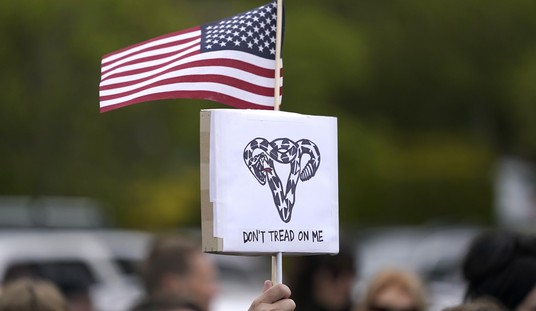"Where Is the Land of Opportunity? The Geography of Intergenerational Mobility in the United States," published this week by the National Bureau of Economic Research, debunks shibboleths of both the left and the right. Conservatives often assert that economic mobility is greater in the U.S. than it is almost anywhere in the world, but the data don't support it. There is greater mobility in many other nations than there is in the U.S. -- the Scandinavian countries, Canada and Australia, for example. But liberals are wrong about whether it is more difficult now than in the past for Americans to move up the income ladder, according to the study. Moreover, there is substantial variation in economic mobility based on a variety of geographic factors.
The researchers of the new study examined income data from tax records for more than 40 million American parents and children, allowing them to look at changes in income for individuals over time, not just aggregate statistics. (The data set redacted names to protect individual privacy.) As a result, they could link a child's later income to that of his or her parents, allowing them to show actual mobility for individuals between 1996 and 2012. What they found was contrary to the mantra that economic mobility is declining.
Recommended
A child born in 1971 into the bottom 20th percentile had about an 8 percent chance of eventually moving into the top fifth of earners, and a child born in 1986 had about a 9 percent chance, so there was little change in overall mobility over the course of the study.
But the chances of moving up the economic ladder depend on a variety of factors, including some surprising ones. The study's authors found tremendous variation in intergenerational mobility based on geography. Children born in cities such as San Jose, Calif., and Salt Lake City had very high degrees of upward mobility -- comparable to those born in countries such as Denmark. But kids born in places such as Charlotte, N.C., and Milwaukee had about half the national rate of economic mobility.
When the researchers delved deeper to see what might explain these geographic variations, they found that areas with large populations of African-Americans had lower mobility. Though that finding won't surprise anyone, what was surprising was that whites who lived in those communities with large African-American presences also experienced lower rates of upward mobility.
The study also found that areas with less urban sprawl had higher intergenerational mobility, and where there was substantial racial and economic de facto segregation, mobility decreased. The strength of social networks -- as measured by participation in civic or religious groups, for example -- also correlated with mobility. "High upward mobility areas tend to have higher fractions of religious individuals and greater participation in local civic organizations," the study's authors write.
The study also found that there were only modest correlations between income upward mobility and local tax and government spending policies and that there was no correlation with local labor market conditions, rates of migration (including immigration) or access to higher education.
But the most important finding is one that most conservatives won't be surprised at and many liberals would rather ignore: "The fraction of children living in single-parent households is the strongest correlate of upward income mobility among all the variables we explored." The more single-parent households in the area the lower the mobility. But as with race, the correlation holds even for those who don't fit the category. Children from intact families experience lower mobility rates if they live in areas with large numbers of single-parent households.
The president has an opportunity in next week's State of the Union to address the issue of inequality in a meaningful way. Instead of simply blaming the rich for earning too large a share of national wealth and arguing that that wealth should be redistributed by the government through higher taxes and more social welfare spending, the president could exhibit some courage by addressing family structure directly.
If President Obama really cares about improving economic mobility, he could start by using his own political capital to promote marriage and encourage two-parent households.

























Join the conversation as a VIP Member